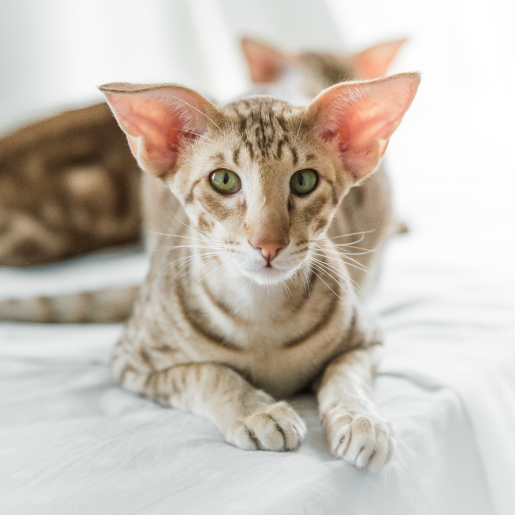Overview
Feline Hyperesthesia Syndrome (FHS) is a complex condition in cats marked by heightened skin sensitivity, episodes of self-mutilation, and sudden, erratic behaviors. These episodes may be triggered by touch, stress, or may occur without warning. Young to middle-aged cats, particularly Siamese and other Oriental breeds, seem to be more commonly affected, suggesting a potential hereditary predisposition.
Cause
The exact cause of FHS remains unclear. Several underlying conditions can produce similar symptoms including neurological abnormalities (possibly seizure-like activity), psychological conditions, dermatologic issues (like allergies or external parasites), or pain associated with the spine. Due to this wide range of possible contributing factors, FHS is typically considered a diagnosis of exclusion, meaning other medical conditions have been thoroughly ruled out.
Clinical Signs
FHS typically presents with sudden twitching or rippling of the skin along the back, most often near the base of the tail. Affected cats may abruptly turn to lick, bite, or groom the area, sometimes to the point of self-trauma. They may also dash frantically around the house, appear agitated, or react to stimuli that are not visibly present.
Additional signs can include overgrooming, vocalization, dilated pupils, and unpredictable, erratic movements. Many cats with FHS show signs of discomfort or distress when touched, especially along the spine or the area where the skin twitching occurs.
Diagnosis
A variety of diagnostic tests may be performed to rule out underlying causes of the symptoms. Skin scrapings and allergy testing can help identify dermatologic conditions such as external parasites, infections, or allergic skin disease that may be contributing to the cat’s discomfort.
Bloodwork and urinalysis are used to assess overall health and detect any systemic conditions that might influence behavior or trigger pain responses.
If a neurologic condition is suspected, advanced imaging such as MRI of the spine or brain may and/or CSF analysis be recommended to evaluate for structural abnormalities, inflammation, or lesions affecting the central nervous system.
If no underlying medical cause is identified through these evaluations, a diagnosis of FHS becomes more likely. At that point, a therapeutic trial may be initiated. A positive response to these treatments can help support the diagnosis of FHS.
Treatment
Treatment for FHS is individualized and often involves a combination of medical management and environmental adjustments.
- Medical Therapy – Treatment may involve exploring a variety of options to determine what works best for your cat. If discomfort from neuropathic pain is suspected, medications such as pregabalin or gabapentin might be considered. To address underlying anxiety or behavioral components, anti-anxiety medications like fluoxetine or clomipramine can be helpful. In cases where seizure-like activity is suspected, anti-seizure drugs such as levetiracetam (Keppra) or phenobarbital may be used. It’s important to remember that each cat responds differently to medications, and the degree of effectiveness can vary.
- Environmental Adjustments – In addition to medication, key components of care include reducing household stress, minimizing known triggers, and providing consistent routines can improve symptoms.
Prognosis
Feline Hyperesthesia Syndrome is a chronic condition, but it is manageable in most cases with appropriate treatment and lifestyle adjustments. While some cats respond very well to medical therapy and environmental modifications, others may experience intermittent flare-ups. Long-term management typically involves lifelong medication(s), regular monitoring, and occasional adjustments to the treatment plan. Fortunately, with consistent care, most cats can live comfortable and fulfilling lives.
